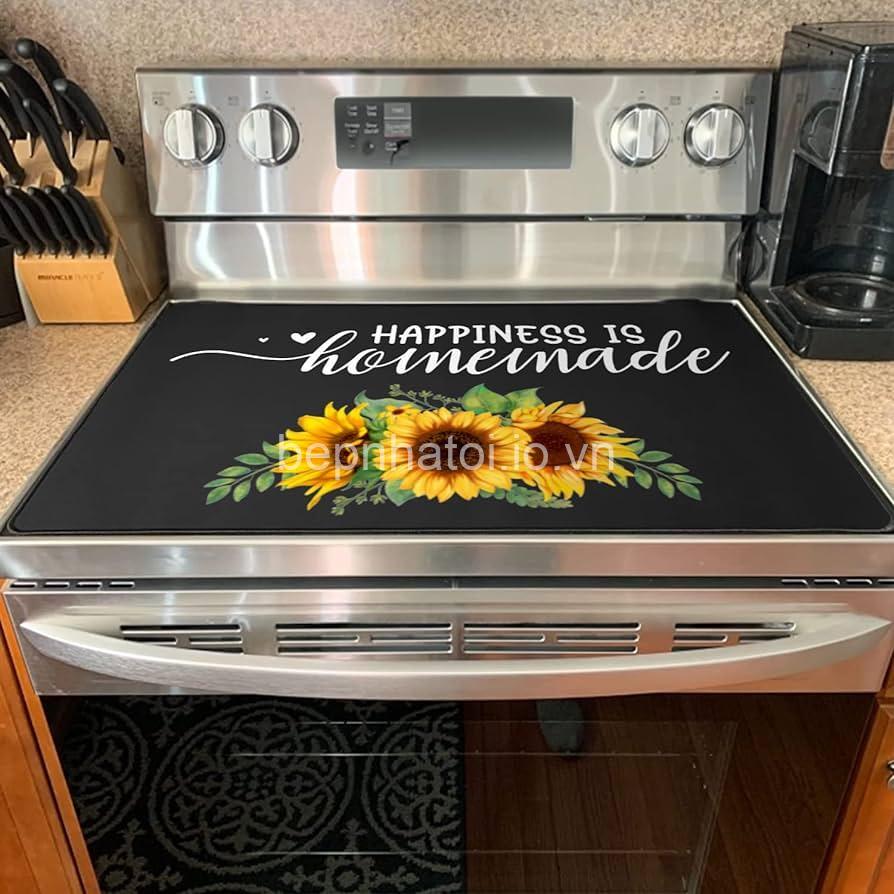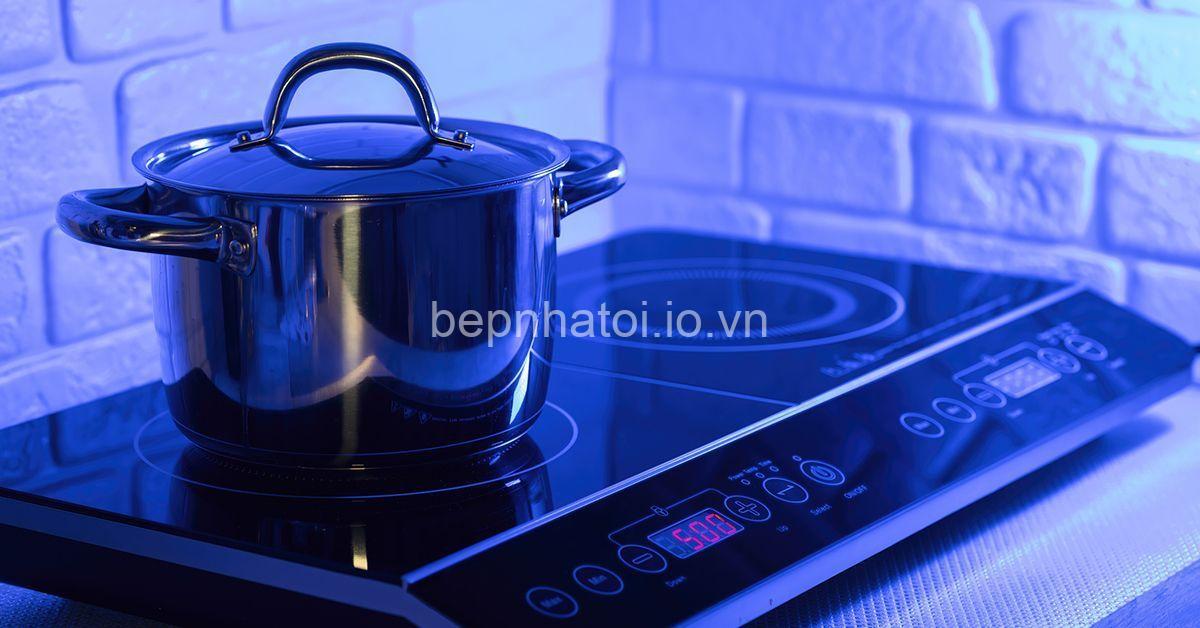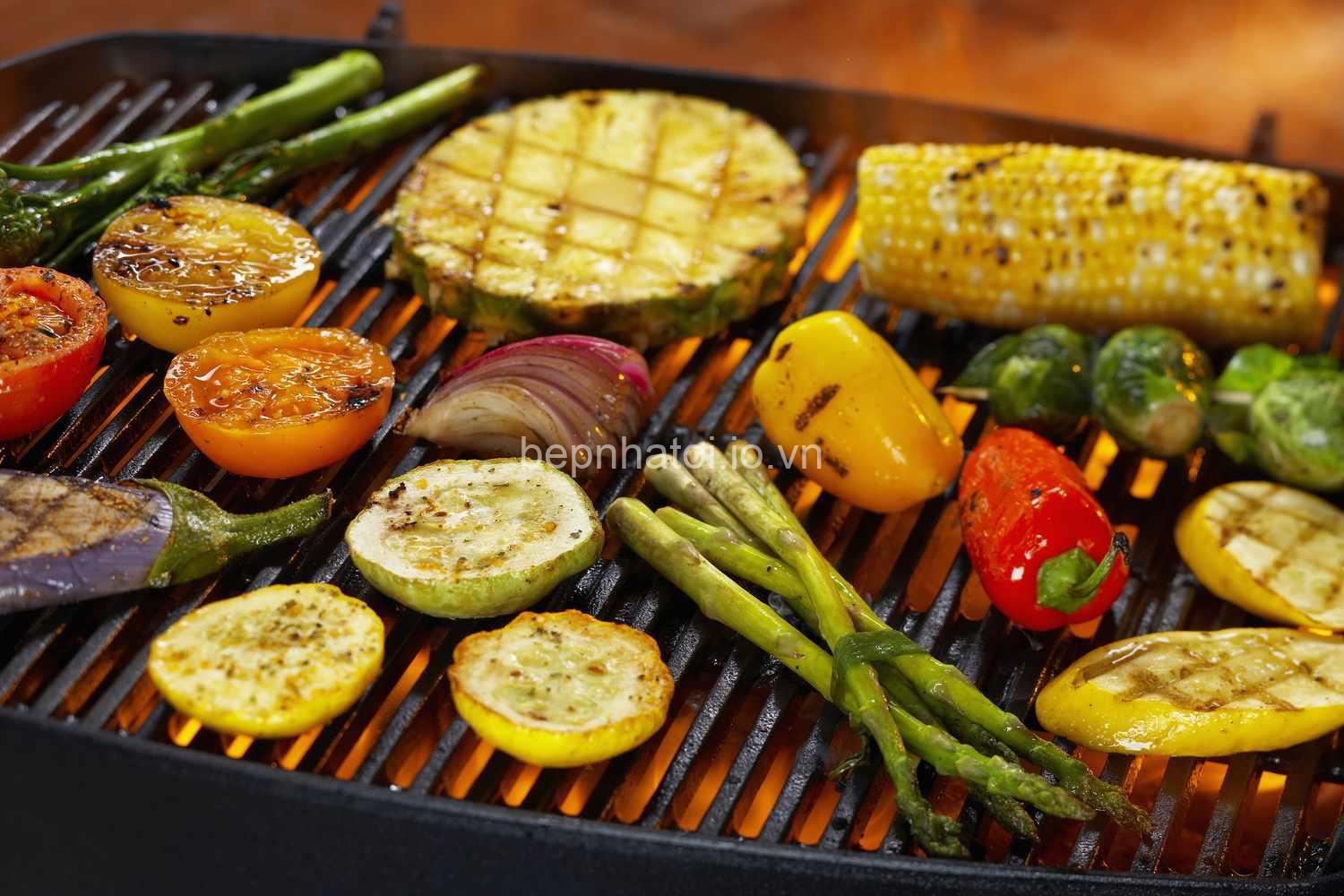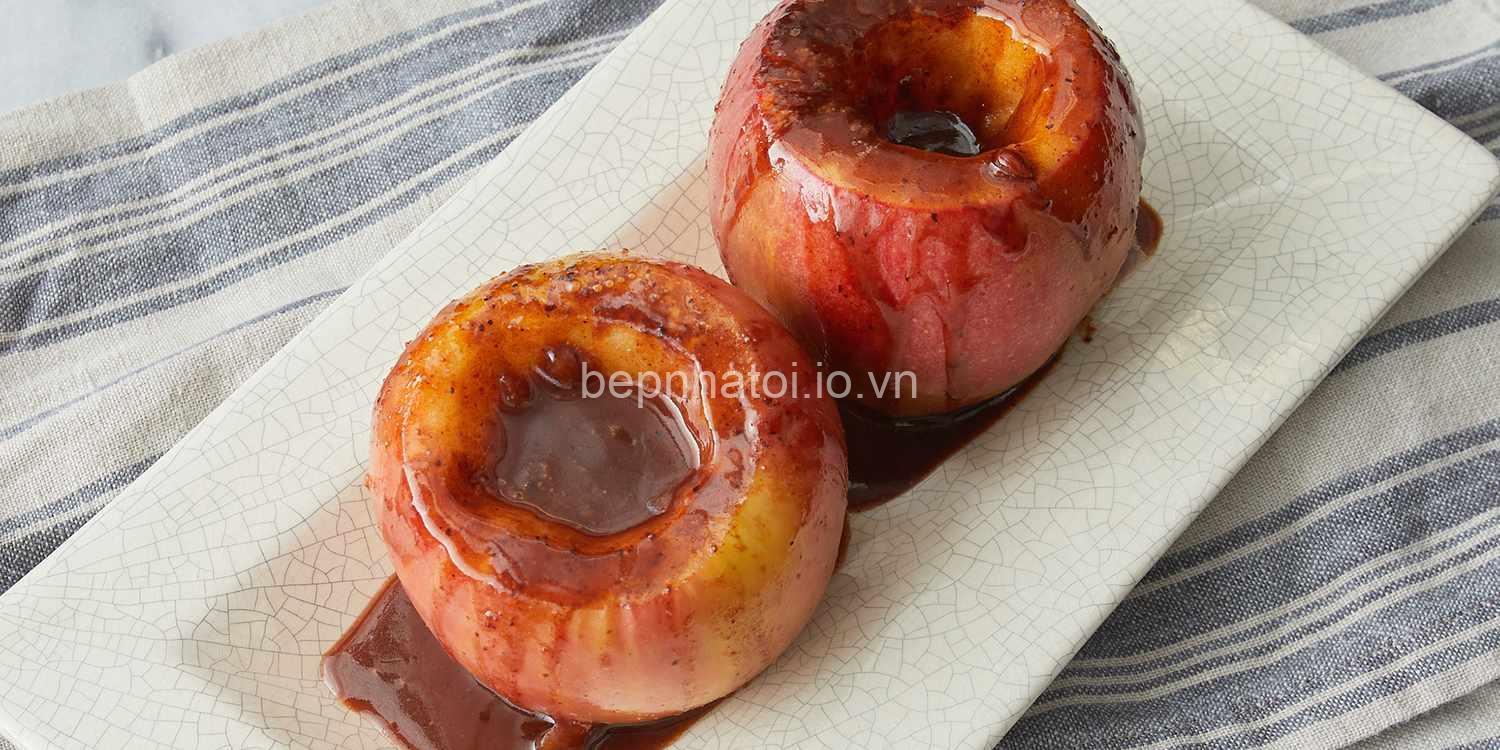
Protect Your Electric Stove From Spills: Prevention & Cleaning Tips. In today’s article, bepnhatoi.io.vn will explore with you in the most detailed and complete way. See now!
Preventing Spills: Essential Habits for a Clean Stovetop
Keeping your electric stove clean is a must, and preventing spills is the first line of defense. Imagine a world where you never have to scrub burnt food off your stovetop – it’s achievable with the right techniques and practices. Let’s dive in:

Safe Cooking Practices:
- Safe Handling of Cookware:
- Use pot holders or oven mitts when moving hot pots and pans. This prevents accidents and burns, keeping you and your stove safe.
- Ensure your cookware is appropriate for the type of stove you have. For example, some cookware can be used on an induction stove while others can’t.
- Don’t fill pots and pans to the brim. This prevents spills and potential boiling over, saving you from messy cleanups.
Monitoring Cooking Processes:
- Constant Attention:
- Keep an eye on your food while it’s cooking. Checking regularly helps prevent boiling over and burning, which are common culprits for spills.
- Invest in a timer to remind you to check on your food, especially when you’re busy with other tasks.
Utilizing Helpful Tools:
- Splatter Screens and Lids:
- Using a splatter screen or lid while cooking can help contain splatters and prevent spills. It’s especially helpful when frying or simmering liquids.
- Drip Pans and Cooking Sheets:
- Place drip pans or cooking sheets under your cookware to catch any spills or drips. This prevents staining and damage to the stovetop.
Cleaning and Maintenance for a Sparkling Stovetop
We all love a shiny stovetop! But even with prevention, spills happen. Here’s where your cleaning and maintenance routine comes in:
Act Quickly:
- Wipe Up Spills Immediately:
- Don’t let spills sit on your stovetop for too long. The longer they sit, the more likely they are to burn or stain the surface.
- Keep a microfiber cloth or paper towels handy and wipe up spills as soon as they occur.
Choosing the Right Cleaning Method:
- Know Your Surface:
- Stovetops come in different materials like glass, ceramic, or stainless steel. Each material requires specific cleaning solutions.
- Use a soft cloth and mild cleaning solutions to avoid scratching the surface of your stovetop.
Regular Stovetop Maintenance:
- Schedule Regular Cleaning:
- Develop a weekly cleaning routine to wipe down the surface of your stovetop and clean the burners.
- Follow the manufacturer’s instructions for specific cleaning and maintenance guidelines.
- Cleaning the Control Panel:
- Clean your control panel with a soft cloth and a mild cleaner, ensuring no water or moisture enters the electronic components. This helps prevent damage and ensures smooth operation.
- Maintaining Stovetop Components:
- Clean your stovetop elements and burners to maintain their optimal performance and prevent clogging.
Protective Measures for a Spill-Free Stovetop
It’s time to talk about the tools that can give you extra protection against spills:
Stovetop Covers:
- Types of Covers:
- Consider glass, tempered glass, or silicone covers. Each type offers different benefits in terms of durability, heat resistance, and ease of cleaning.
- Choose a cover that matches your stovetop’s size and style for a seamless look.
- Installing and Using Stovetop Covers:
- Follow the manufacturer’s instructions to install and use your cover correctly. Make sure it’s properly secured for maximum protection and safety.
Other Protective Accessories:
- Spill-Proof Cookware:
- Consider using spill-proof pots and pans designed to minimize the risk of spills. They often have special lids or features that help prevent boiling over.
- Heat-Resistant Mats:
- Place heat-resistant mats under your cookware to absorb spills and prevent damage to the stovetop. They also provide a layer of insulation, protecting your countertops from heat.
Kitchen Organization: Creating a Spill-Free Environment
Organization isn’t just about aesthetics; it plays a crucial role in preventing spills.
Clear Workspaces:
- Declutter Your Stovetop:
- Keep your stovetop and surrounding areas clear of unnecessary items. This helps prevent accidental spills and makes it easier to clean up when necessary.
- Create a Clean and Organized Cooking Area:
- Having a dedicated space for your cooking tools and ingredients can prevent clutter and accidents.
Keep Ingredients Accessible:
- Minimize Movement:
- Have all necessary ingredients and utensils within easy reach while cooking. This prevents rushing around and spilling ingredients, leading to a more organized and efficient cooking process.
FAQs:
What are some ways to prevent boiling over while cooking?
Preventing boiling over is crucial to keep your stovetop clean. Here are some tips:
- Use a low heat setting: Lowering the heat setting helps control the boiling process and prevents sudden bursts of liquid.
- Stir regularly: Stirring your food while cooking helps distribute heat evenly and prevents boiling over.
- Add a splash of cold water: If you notice your food is about to boil over, add a splash of cold water to help reduce the heat.
What are the best cleaning solutions for an electric stovetop?
Cleaning solutions are crucial for maintaining a spotless stovetop. Here are some options:
- Mild dish soap: Use a mild dish soap and a soft cloth to wipe down your stovetop, especially for light spills and everyday cleaning.
- Baking soda paste: Mix baking soda with a bit of water to create a paste. This is effective for removing stubborn stains and burnt food.
- Commercial stovetop cleaner: Use a commercial stovetop cleaner specifically designed for your type of stovetop. Follow the instructions carefully.
How often should I clean my electric stovetop?
Cleaning frequency depends on how often you cook. However, aim for a weekly cleaning routine to keep your stovetop in top condition.
What are some tips for cleaning the control panel of an electric stove?
The control panel is a delicate part of your stove. Avoid using abrasive cleaners or soaking it with water. Instead, use a soft cloth and a mild cleaning solution to wipe down the surface.
Conclusion:
Protecting your electric stove from spills requires a combination of proactive measures and regular maintenance. By following these tips, you can create a clean and safe cooking environment. Remember, a clean stovetop is a happy stovetop!
Don’t forget to share your tips and tricks with fellow cooks in the comments below. For more helpful information on pet care and other topics, be sure to visit bepnhatoi.io.vn. We’re always here to provide you with valuable information and resources. Happy cooking!
EAVs:
- Stovetop – Material – Glass
- Stovetop – Material – Ceramic
- Stovetop – Material – Stainless Steel
- Cookware – Type – Spill-proof
- Cookware – Feature – Special Lids
- Cookware – Feature – Anti-Boiling Over
- Heat-Resistant Mat – Function – Absorb Spills
- Heat-Resistant Mat – Function – Protect Countertop
- Control Panel – Function – Touchscreen
- Control Panel – Material – Glass
- Control Panel – Cleaning Method – Soft Cloth
- Control Panel – Cleaning Method – Mild Cleaner
- Cleaning Solution – Type – Mild Dish Soap
- Cleaning Solution – Type – Baking Soda Paste
- Cleaning Solution – Type – Commercial Stovetop Cleaner
- Cleaning Solution – Purpose – Removing Stains
- Cleaning Solution – Purpose – Removing Burnt Food
- Burner – Type – Coil
- Burner – Type – Induction
- Burner – Cleaning – Maintenance
EREs:
- Stovetop – Made Of – Material
- Cookware – Designed For – Preventing Spills
- Heat-Resistant Mat – Protects – Countertop
- Control Panel – Controls – Burners
- Cleaning Solution – Used For – Cleaning
- Burner – Located On – Stovetop
- Stovetop – Requires – Maintenance
- Cleaning – Prevents – Damage
- Prevention – Reduces – Risk of Spills
- Kitchen – Contains – Stovetop
- Kitchen – Requires – Organization
- Organization – Improves – Cooking Experience
- Cleaning Solution – Removes – Stains
- Cleaning Solution – Removes – Burnt Food
- Maintenance – Ensures – Longevity
- Stovetop – Needs – Cleaning
- Control Panel – Has – Touchscreen
- Control Panel – Made Of – Glass
- Cookware – Features – Lids
- Cookware – Features – Anti-Boiling Over
Semantic Triples:
- Electric Stove, is a type of, Appliance
- Stovetop, is part of, Electric Stove
- Cookware, is used on, Stovetop
- Spills, are caused by, Cookware
- Cleaning, is necessary for, Spills
- Cleaning Solutions, are used for, Cleaning
- Covers, are used to protect, Stovetop
- Material, is used to make, Covers
- Burners, are located on, Stovetop
- Control Panel, controls, Burners
- Maintenance, is performed on, Electric Stove
- Safety, is important for, Kitchen
- Kitchen, is organized for, Efficiency
- Pot Holders, are used for, Handling Cookware
- Damage, is caused by, Spills
- Risk of Damage, is reduced by, Cleaning
- Longevity, is ensured by, Maintenance
- Experience, is improved by, Safety
- Prevention, is necessary for, Protection
- Atmosphere, is created by, Kitchen





